Vegetarian rendang? In Padang, an iconic dish gets a healthier update
Advertisement
CNA Insider
Vegetarian rendang? In Padang, an iconic dish gets a healthier update
Reputed in her village equally a 'masterchef', Neni Rahdipa cooks traditional Minang recipes the quondam-school mode her grandma taught her - using wood fire and cow heads. Simply she gives this one love classic a twist.
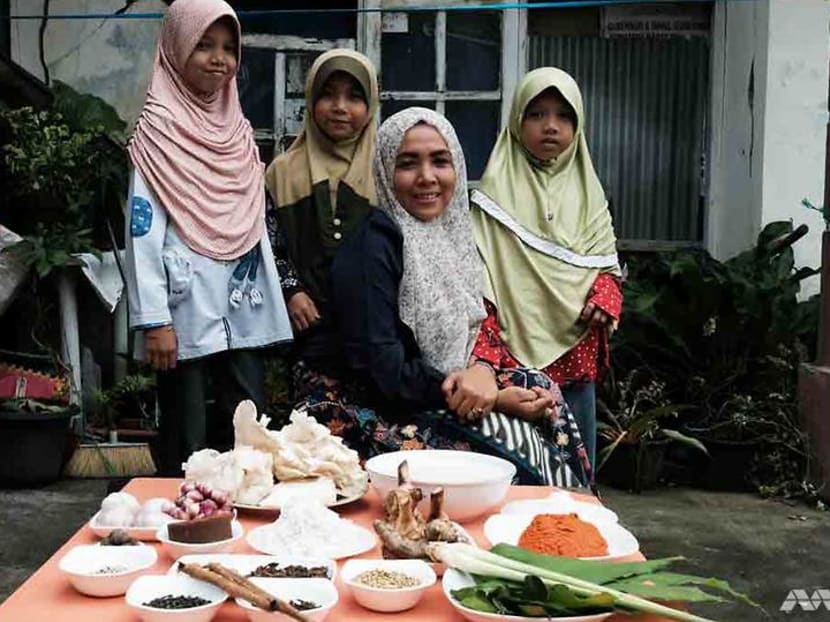
Ms Neni Rahdipa, 37, is writing down all the traditional recipes her grandmother taught her, to exist passed on to her own 3 daughters.
Padang, INDONESIA: Neni Rahdipa scurries past a dizzying array of stalls selling coconuts, spices, herbs, fish and meat, on the chase for the 24 ingredients that make upwards a dish that's part her own invention, part the child of generations of Minangkabau tradition: Mushroom rendang.
Deftly navigating the morning marketplace bustle, she finds what she's looking for: The spices section. Amid the symphony of sweet and musky smells, she sniffs expertly at a cinnamon stick, critically tests some freshly-ground chilli padi paste, and doles out tips like how to discern if a nutmeg is fresh (it should brand a audio when you shake it).
We've travelled to Padang, upper-case letter of Westward Sumatra and the place most of us place with quintessential Minang cuisine, to learn from Ms Neni – an energetic 37-yr-old nutrient entrepreneur, who is also a passionate ambassador for the local heritage cuisine.
She's known in her village of Tanjung Aua as a "masterchef", with her own thriving online rendang business organization. So when the local government wanted to raise awareness about healthier eating, they approached her.
WATCH: Tips on shopping at a wet market (2:41)
"Hither (in Padang), we are ever racing to be innovative, always thinking of something new," said Ms Neni. And having vegetarian friends who had always been smashing to eat rendang, she gamely took upwardly the challenge of creating a meat-gratuitous rendang – or randang, in Bahasa Indonesian.
Buying the all-time ingredients for her rendang takes her a proficient four hours.
She pokes and prods, sifts and sniffs. Plunging her hand into a sackful of coriander seeds, she declares: "Indian coriander is meliorate … more aromatic, it intensifies the flavor of the rendang."

Such meticulous attention to her ingredients is what makes for the fine nuances in her version of the iconic Minang dish. (Total recipe at the bottom of story)
THE PAINSTAKING OLD Means ARE BEST
Arriving back home with about 10kg worth of shopping, she commandeers her three young daughters, aged viii, x and xi, who are just home from school. "Bring a pocketknife… launder the shallots and ginger for grinding," she instructs them.
The grooming of the spices is maybe the nearly important office in the making of the dish.
Ms Neni uses a batu giling, a traditional stone grinding apparatus that's like a ball rolled over a rock surface, to set up all her rempah, or spice pastes.
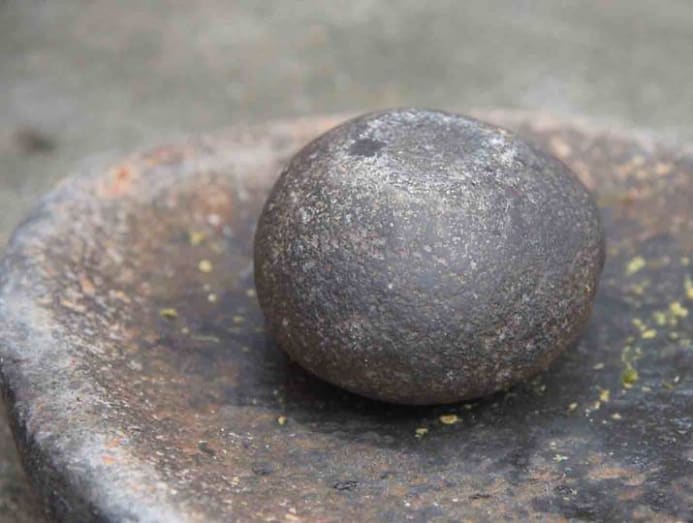
Sitting hunched on a low stool, she throws her weight into grinding the beginning batch of spices. For harder ingredients like nutmeg, she uses a pounding motion first before grinding.
"The smoother the texture of the spices, the smoother the rendang," she says between the back-and-forth strokes.
My grandmother always says that if you tin grind spices well, when you grow up y'all can get a good mother.
She chuckles at the memory of the aphorism. That may be true or not, but the fact is that more people are using electrical blenders these days considering it is faster, and this requires adding water to make the paste smoother. Grinding the erstwhile-fashioned, painstaking mode, by contrast, produces a more full-bodied, potent paste.
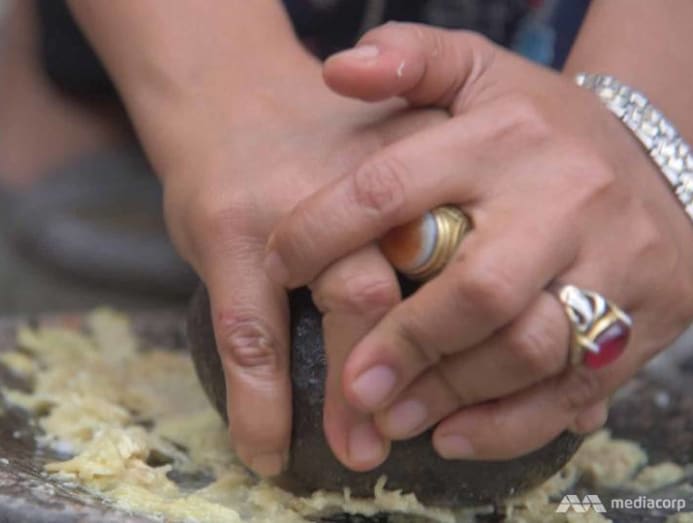
The erstwhile means which her grandmother taught her are what Ms Neni stands by. When information technology comes to getting ready to cook, for instance, she goes off into the village, looking for stale coconut husks to build a traditional wood stove fire.
Her grandmother would use wood from trees with sweet bawl to heighten the aroma of the rendang, she says, but now about households use their gas stove. The coconut husks serve as excellent burn starters for one-time-school fires.
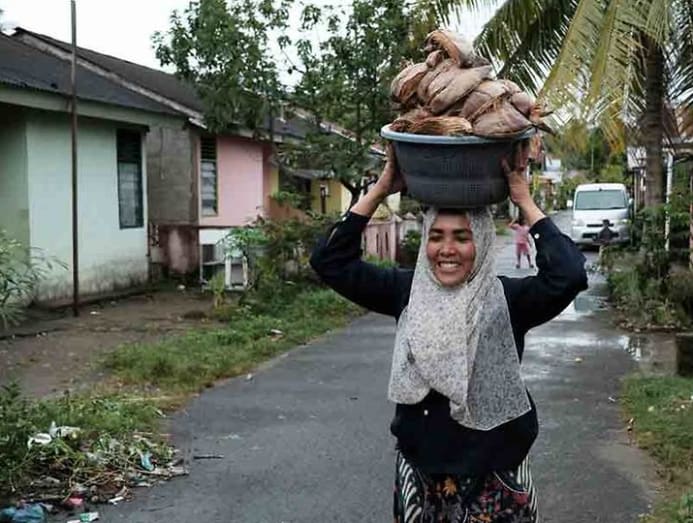
LIFE LESSONS FROM RENDANG
Edifice the fire is merely the offset of a long cooking procedure that can take an entire day. That's why rendang is non commonly cooked for daily eating at home, but information technology features on Minangkabau special occasions like weddings and parties.
The story goes that long agone, when the mount-dwelling Minangkabau men left their villages to travel afar in search of fortune, they needed a dish that would last and not spoil on the long journeys. Thus "randang" was invented.
According to Ms Neni, the discussion means to cook something slowly such that all the water is evaporated and the meat is preserved – so the huge corporeality of ingredients i starts out with is reduced to a pocket-sized but intense portion.

The taste though, varies from area to expanse.
The rendang made in the mountains is darker and spicier, because it'southward colder. In the littoral areas, the rendang is saltier.
The ingredients hold symbolic significance for the Minangkabau. It'southward said that the meat represents the clan leaders, the coconut milk the intellectuals, the chilli the religious leaders, and the spice rempah the larger society; all of it mixed together harmoniously.
On a personal level, the Minang people also believe that rendang teaches them three key lessons: Patience in preparation, persistence in stirring repetitively, and skill and knowledge in selecting the best spices and ingredients.
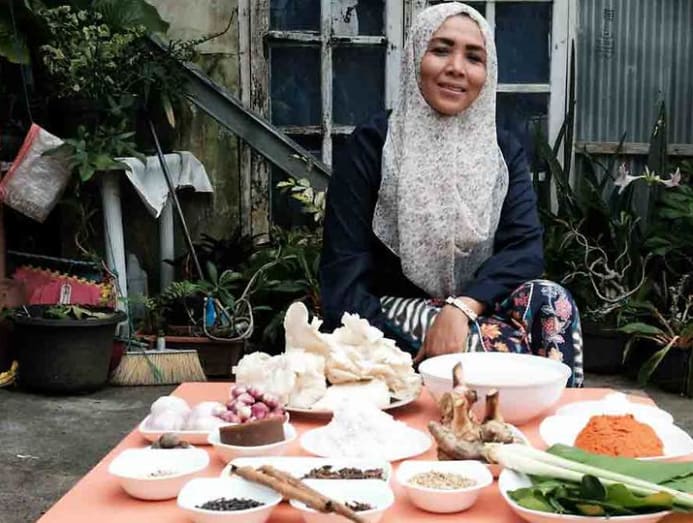
These were lessons Ms Neni first began learning from her grandmother, whom she lived with from the age of 3. "She was meticulous in her cooking," she recalled. Her grandma would set the rendang to cook for 10 hours, to achieve the desired color and texture.
IN GRANDMA'Due south FOOTSTEPS
Now 85, Madam Nuraini is even so a fiercely contained woman who brooks no nonsense.
She used to be a businesswoman who ran two restaurants in Padang and a armada of buses – a reflection of the Minangkabau matrilineal civilization, where property and family unit proper name are passed down from mother to girl.
One day, her firm and state will belong to Ms Neni and her own daughters. Just for now, the dame'due south cooking skills, decision, and entrepreneurial sense are traits her eldest granddaughter has surely already inherited.
For instance, when challenged to create a healthier rendang dish with mushroom, instead of the traditional beef or buffalo meat, Ms Neni spent three months experimenting with dissimilar combinations of spices.
She realised that she had to add spices like star anise to impart the extra flavor that the mushrooms lacked. Also, she discovered: "The oyster mushroom is suitable for rendang considering the fibre is like that of craven meat, it'due south quite chewy."
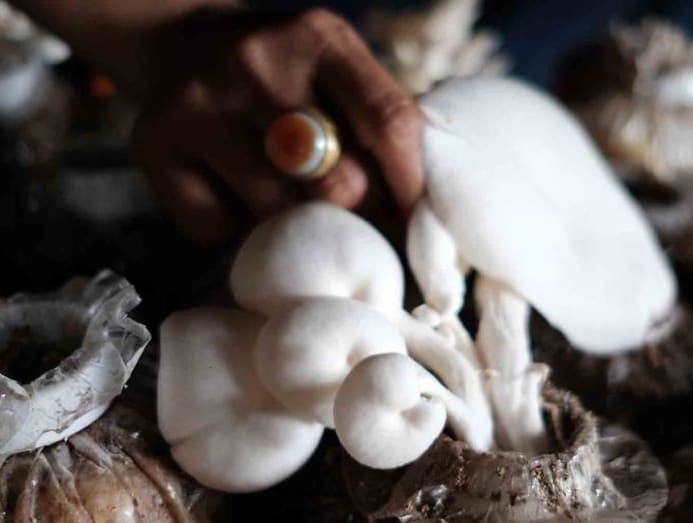
"Later iii months, praise God, nosotros were the first to serve mushroom rendang in Padang," she added proudly.
These days, she sells her rendang paste, and beef and mushroom rendang online. Demand is growing, and orders come up from every bit far away as Australia and the United States.
Staying staunchly true to sometime-style Padang cuisine makes shrewd concern sense to her: 'Modern' flavours may be trendy right now, simply that means fewer people can melt the traditional recipes.
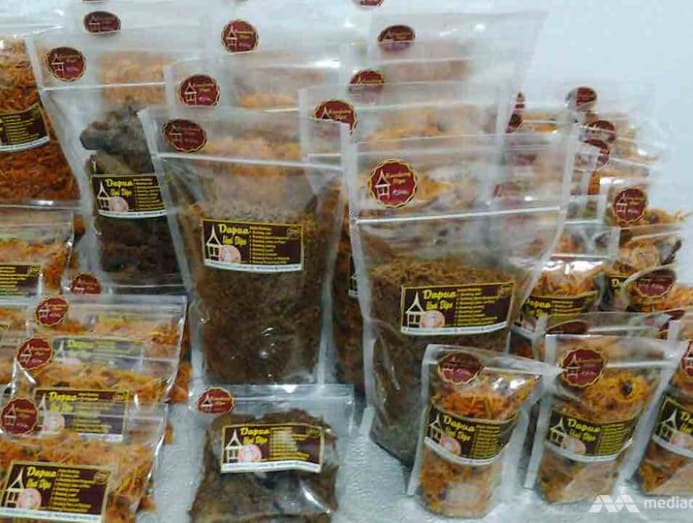
Cow'S Head AND OTHER LEGACIES
Meanwhile, we have yet to gustatory modality her signature dish for ourselves. Every bit Ms Neni fries the spice pastes, the sugariness, salty and spicy aromas released lure the neighbours out of their houses.
She wastes no time in enlisting their assistance to stir the terminal mixture – a deadening process that takes hours and hours, until all the h2o has evaporated and she is happy with the color and texture of her mushroom rendang.
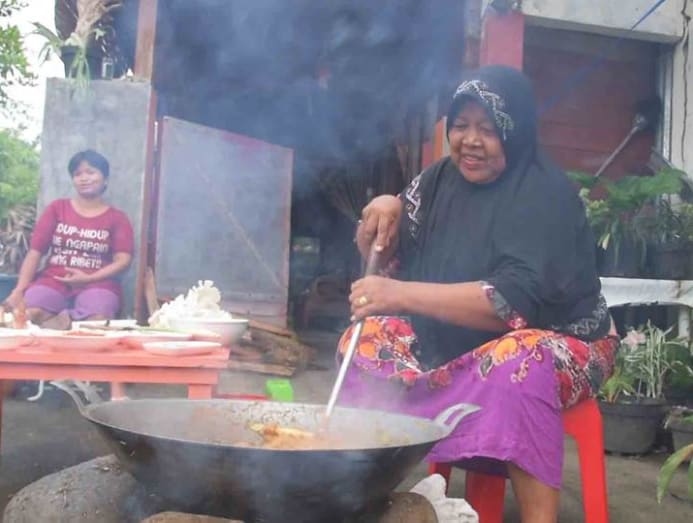
Another of her grandmother'south signature dishes that she is keen for united states of america to try, is anyang tulang rawan – spicy cow head salad. (Recipe at he end of story)
Various parts of the moo-cow's head including the eyeballs and nose are mixed with assorted spices similar tamarind, lime, chilli, onions and coconut. "It's fresher and more sour than other Padang food," she says.
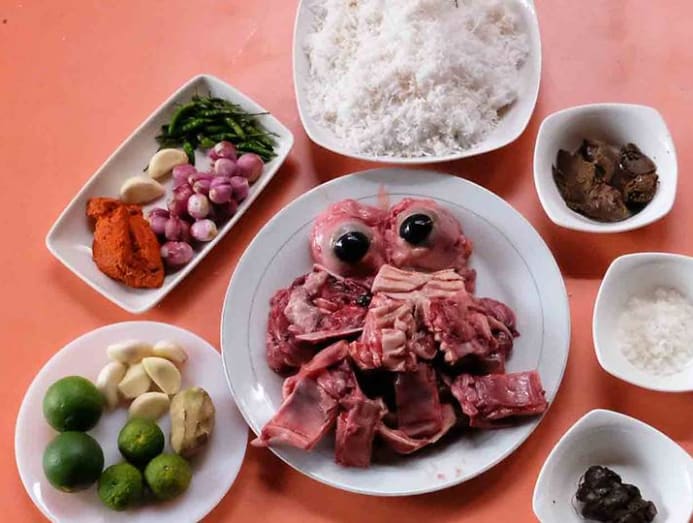
The dish was created in a fourth dimension when meat was scarce and, when a moo-cow was slaughtered, information technology was for a festive occasion like Hari Raya. She explains:
It is wasteful if nosotros don't use it (the cow) properly.
Then even though other cuts of the meat are readily bachelor nowadays, she believes that information technology is important to preserve a dish that uses parts of the beast others may find off-putting.
"In Padang city, only a few people tin can cook this, and this is a source of pride for me … If it stops at me, it will be unfortunate for the next generation because this is one of the almost delicious dishes, in my view."
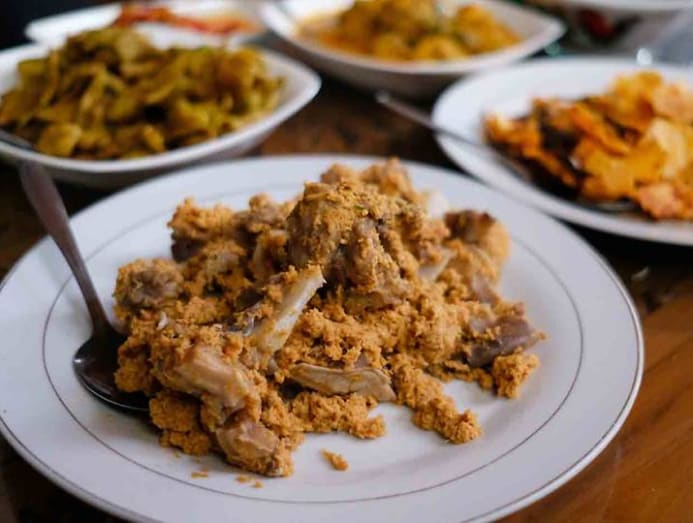
To ensure these dishes remain a legacy for future generations, Ms Neni has written all the recipes downwardly in a notebook.
Simply affectionate well-cooked rendang is one thing – her daughters aren't likewise swell on trying the moo-cow head, shying abroad in horror when mummy takes a large seize with teeth of the eyeball and sucks the gelatinous bits out.
Ms Neni isn't as well worried. It wasn't until recently that she herself learnt to appreciate this dish, she admits, so hopefully one solar day her girls will likewise. And when that mean solar day comes, the recipes will be waiting safe in the pages of her notebook.
RECIPE #1: MUSHROOM RENDANG (RANDANG JAMUR)
This recipe makes plenty for 10-xv people
INGREDIENTS
1kg oyster mushrooms
1kg coconut milk (old coconut)
3 tablespoon Indian coriander seeds
ten-15 white peppercorns
ten-xv black peppercorns
one nutmeg seed
250g chilli paste
100g galangal
100g ginger
100g garlic
100g shallots
5-6 cloves
three cardamom pods
two star anise
1 cinnamon stick
ii lemongrass stalks
2 turmeric leaves
2 bay leaves
5-half-dozen kaffir lime leaves (merely the leaves)
75g palm sugar
3 tablespoons toasted kokosnoot shavings (grinded into a paste)

Fix THE REMPAH
1. Grind the peppercorns, coriander and nutmeg in a batu giling (if you don't take one, use a pestle and mortar) until it forms a smooth paste. Add kokosnoot milk to make the paste smoother, faster.
2. Grind the ginger, garlic, galangal and shallots separately, to form four pastes.
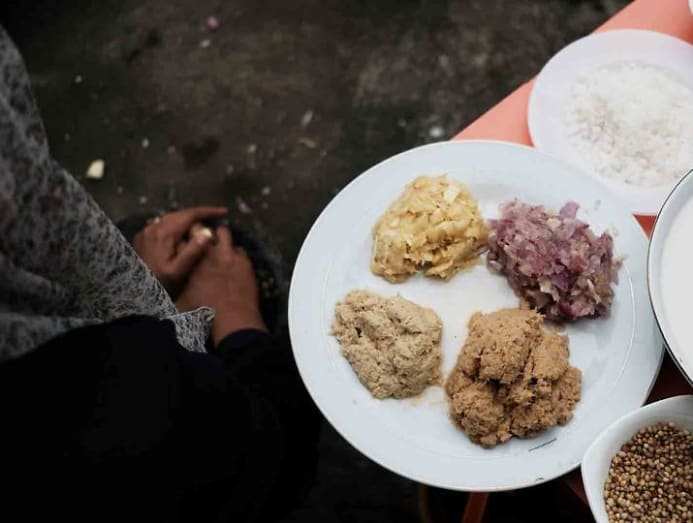
Melt THE RENDANG
3. Oestrus oil in a wok over a medium flame.
4. Fry the ginger, garlic, galangal and shallot pastes separately, until each one releases its aroma.
5. Stir in the chilli paste, coconut milk, lemongrass stalks and turmeric leaves. Combine thoroughly.
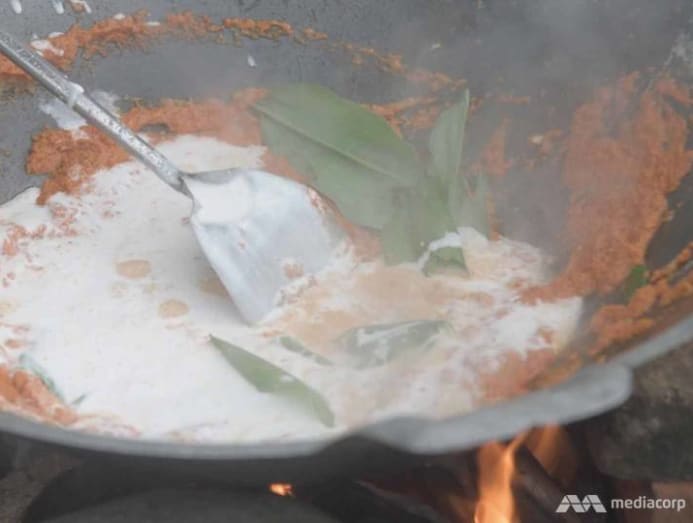
vi. Stir in the paste of peppercorn, coriander and nutmeg.
7. Add the bay leaves and kaffir lime leaves. Tear up the kaffir lime leaves and remove the main vein, to enhance the odour.
eight. Stir until the kokosnoot milk dries up.
ix. Add the mushrooms.
x. Stir continuously in a circular and upwards-down motion for half dozen-10 hours.
RECIPE #2: SPICY COW HEAD SALAD (ANYANG TULANG RAWAN)
INGREDIENTS
For the beef:
Eyeballs
Throat
Soft upper palate
Cheek
Nose
Pollex sized piece of ginger (crushed)
ii bay leaves
6 cloves garlic
Common salt
For the spicy dressing:
1 tablespoon red chilli paste
7 small green chillies
15 shallots
2 cloves garlic
ii big limes
ii small limes
1 tablespoon of tamarind paste
50g coconut shavings
1 tablespoon toasted coconut shavings
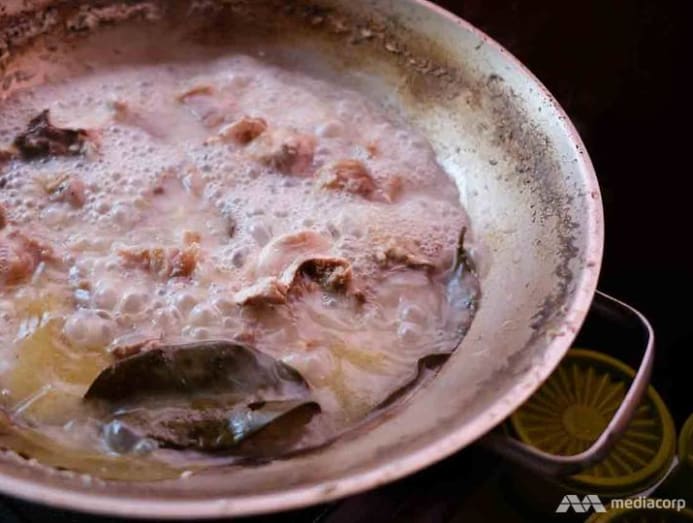
COOK THE Cow HEAD
1. Boil water in a large wok with a sprinkle of salt, ginger, bay leaves and garlic.
2. Wash the beef parts three times, or until water runs clear.
three. Once the water is boiling, add the eyeballs.
4. After 10 minutes, add the residual of the beef parts.
5. Eddy over a high fire for at to the lowest degree 2 hours until meat is tender. When water reduces, top upwardly with boiling hot h2o.

Make THE SALAD
vi. Meanwhile, grind crimson chilli paste with pocket-sized green chillies and a teaspoon of salt.
seven. Add and grind shallots, then kokosnoot shavings.
8. Add the juice of 2 big limes, then add together 2-3 slices of modest limes (adjust according to preference).
ix. Mix in toasted coconut shavings and tamarind paste.
10. Take the meat out of the pot once information technology's tender, and leave to cool completely.
11. Toss the meat slices with the spicy dressing and serve cold.
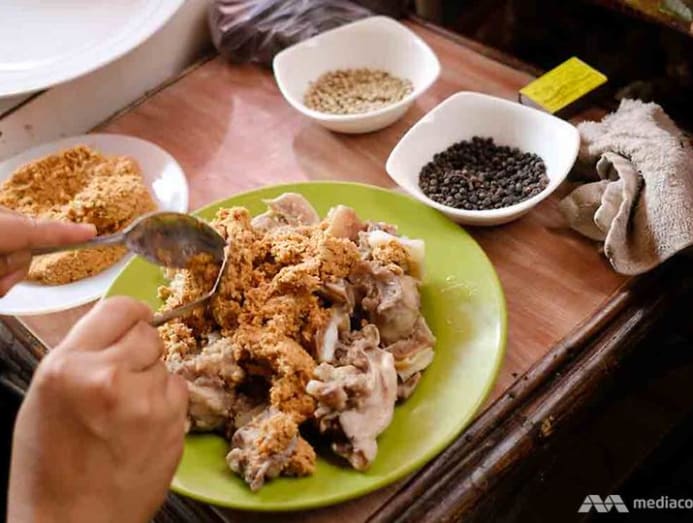
Contempo Searches
Trending Topics
Source: https://cnalifestyle.channelnewsasia.com/cnainsider/vegetarian-rendang-padang-healthier-mushroom-minang-recipe-214171


0 Response to "Vegetarian rendang? In Padang, an iconic dish gets a healthier update"
Postar um comentário